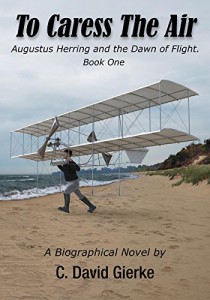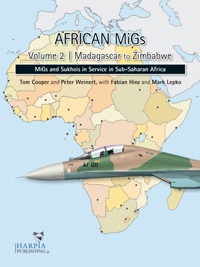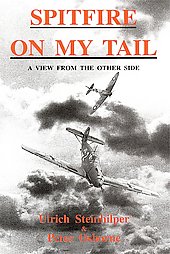Since the invention of electrical power, during the Second Industrial Revolution – the period from 1870 to the start of World War I – no invention has had a greater impact on travel and commerce as the airplane. In 2016 U.S.-serving airlines flew over 928 domestic and international passengers. It is estimated that the total revenue of the global airline industry will be around $736 billion in 2017.
The creation of powered and controlled flight by Wilbur and Orville Wright was the culmination of man’s fascination with flight that dates back to ancient times. While mankind benefits from the ingenuity and toil of visionaries, and those who labor to make their inventions practical and commonplace, few people know much about the creators responsible for the industrial world.
David McCullough’s The Wright Brothers offers aviation enthusiasts and other history buffs a window into the lives of Wilbur and Orville Wright and their determination to invent the airplane. The American historian spends considerable pages detailing how both brothers were mechanically minded growing up. Like their mother, the boys tinkered with toys, always curious to know how they worked. What whet their appetite for aviation and fueled their awe and wonder for flight was a toy helicopter that they received as a gift. The contraption was essentially a stick with two propellers that moved by twisting rubber bands.
In addition to their mechanical savvy, the brothers were also voracious readers. Some of the books that inspired them the most were on the “locomotion of birds.” In other words, how birds fly. Their love of books came from their father, Bishop Milton Wright, who kept many books in their home.
Part of the charm of McCullough’s insightful biography of the Wright Brothers is his attention to the details of the Wright family. The Wright’s, we are told, were a close-knit family. Wilbur and Orville were close to their sister, Katharine, a school teacher. There were also two older brothers, Reuchlin and Lorin, both married. Their mother, Susan Koerner Wright, died from tuberculosis on July 4, 1889, age fifty-eight.
The Spanish philosopher, José Ortega y Gasset, argues that human history is the result of vital-reason, or life lived and understood from the inside out. Individuals make history. This should be the main task of historians. McCullough’s biography of the Wright brothers goes a long way in citing the character and personality of the Wright brothers, how they received their tireless work ethic from their father, and what it means to toil alone for years without the promise of success. Much of what we know about what made the brothers work as hard as they did – and triumph over tremendous odds – comes from the many letters they wrote home while away working on their airplanes. While reserved and unassuming, the Wright brothers took many photographs of their early flying machines. This would suit them well in settling future disputes with other aviators as to who invented the airplane.
Missing from McCullough’s The Wright Brothers is the cliché, psychoanalytic babble that many writers use today to make historical figures fit into the social-political agenda of the post-modern world.
Before dedicating themselves to inventing a flying machine, the Wright brothers began to build bicycles during the bicycle craze of the last two decades of the nineteenth century. The brothers were successful as bicycle builders. They even opened a bicycle shop in Dayton, Ohio. They believed the knowledge gained from their work on how best to balance a bicycle helped them understand the problem of “equilibrium” in flight.
McCullough situates the Wright brothers and the invention of the airplane in a historical milieu that enlightens readers as to the problems and technical difficulties that the brothers faced. The Wright brothers are placed alongside a handful of others who also aspired to fly. The author pays attention to Otto Lilienthal’s glider, and how this made the Wright brothers realize that, while Lilienthal was a dedicated student of flight, his tables for creating lift were wrong. Also, we are informed about how Wilbur and Orville became friends with Octave Chanute, a French-American civil engineer and early aviation pioneer. Of equal importance, the reader learns about Samuel Langley’s unsuccessful attempt to fly his aerodrome, the creation of which was aided by a $50,000 U.S. War Department government subsidy, and how Langley eventually became the 3rd Secretary of the Smithsonian. In contrast to Langley, from 1900 to 1903 the Wright brothers spent $1,000 of their own money building and transporting their flying machines. The Wright brothers first flew in Kitty Hawk, North Carolina; perfected powered flight at Huffman Prairie outside of Dayton, and hosted flying demonstrations in Washington D.C., where Orville had a near-fatal crash. The book also explains in fine detail Wilbur’s methodical flying demonstrations in over one year that he lived in France, Germany and Italy. On May 25, 1910, Orville flew to a height of 2,720 over Huffman Prairie in a flying demonstration before the Aeroplane Club of Dayton.
As important as building and flying their airplanes, the story of the Wright brothers is one of human perseverance and how they managed the ongoing challenges of their desire to fly with confidence and optimism. Another valuable aspect of McCullough’s book is the story of what happened to the brothers post the invention of the airplane. For instance, there was a contentious lawsuit that Orville dealt with for many years, after Wilbur died on May 30, 1912, age forty-five. The lawsuit was with aviation pioneer, Glenn Curtiss, and had to do with the rightful ownership of the patent for the invention of the aileron. The Wright brothers eventually won the lawsuit.
The Wright brothers approached flight meticulously. They were not crackpots. They created the first wind tunnel, which enabled them to understand the dynamics of air flowing through the surface of an airfoil. They were the first aviation pioneers to understand the dynamics of flight: lift, pitch, roll and yaw. Until they gained this knowledge, human flight remained impossible. The Wright brothers were also the first flyers to understand the necessary curvature of wings in order for them to be effective in creating life: dihedral angle. This discovery even allowed them to understand what type of propeller worked best. Perhaps most importantly, the Wright brothers first developed the idea of “wing warping,” also called “wing twisting.” They were the first to realize that flight, and especially turning an airplane, requires changing the pressure of wind passing over a wing. This is how they came upon the invention of the aileron.
Aviation enthusiasts are adept at navigating through the rich archives of aviation history and aircraft specs and technology that discerning readers can tap into today. There are many excellent books available that concentrate on flight and aviation history. McCullough’s The Wright Brothers is a book of American history and the lofty aspirations of the humble brothers from Dayton, Ohio who made the invention of the airplane possible. This biography of the Wright brothers is truly a look at the broad shoulders of human ingenuity and the painstaking effort that makes anything worth achieving possible.












Leave a Reply